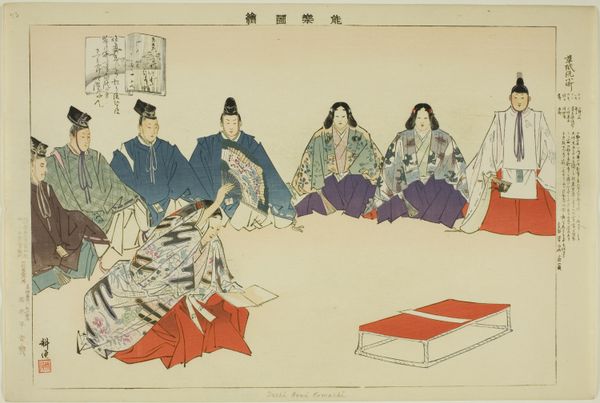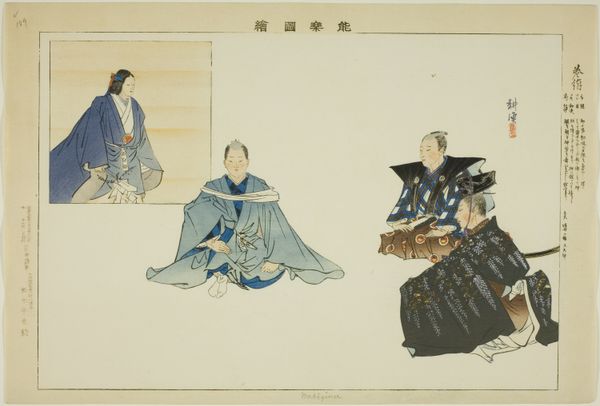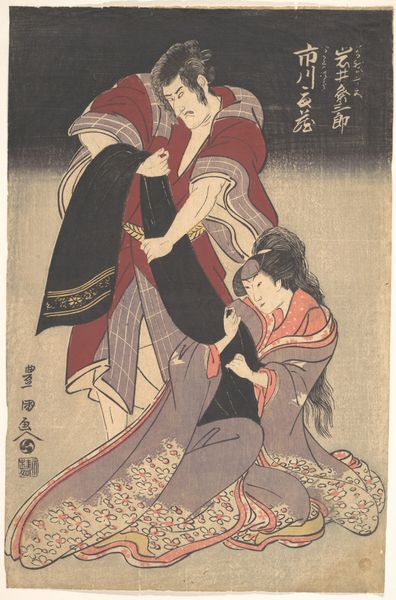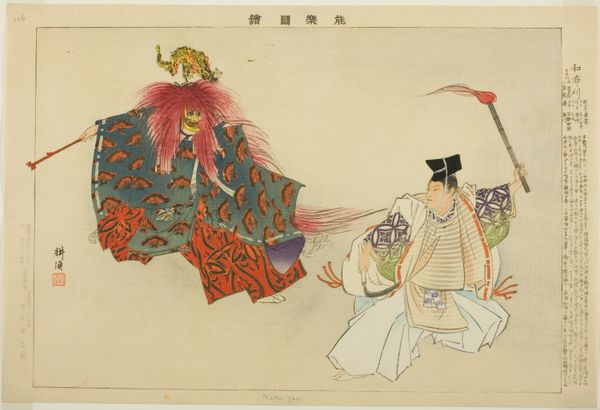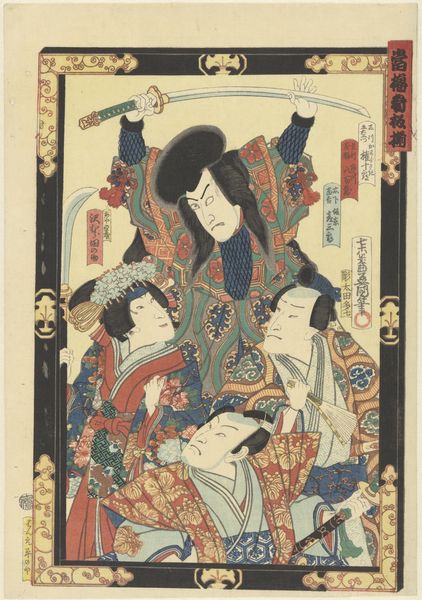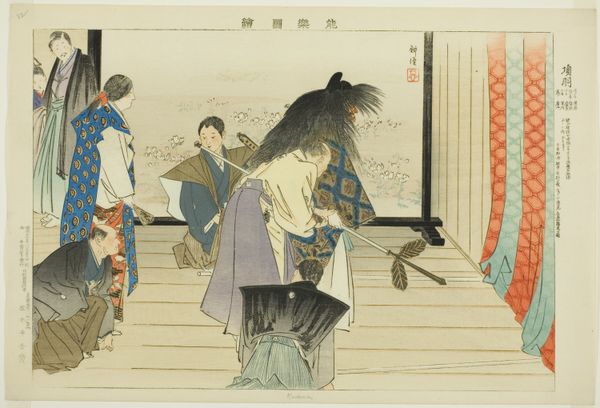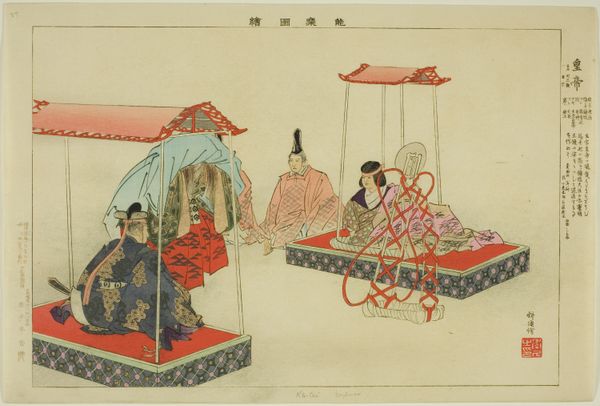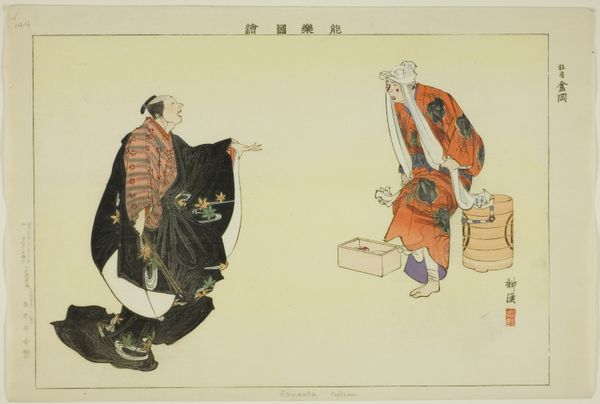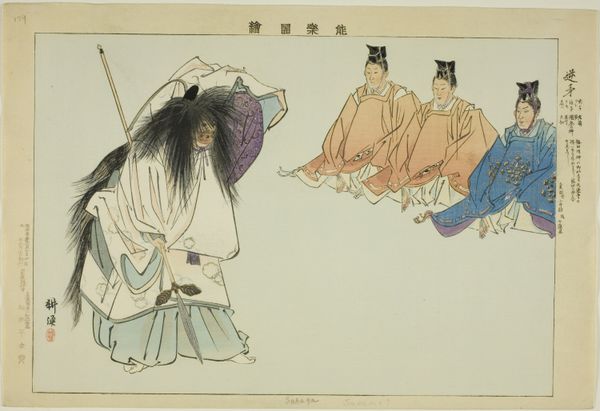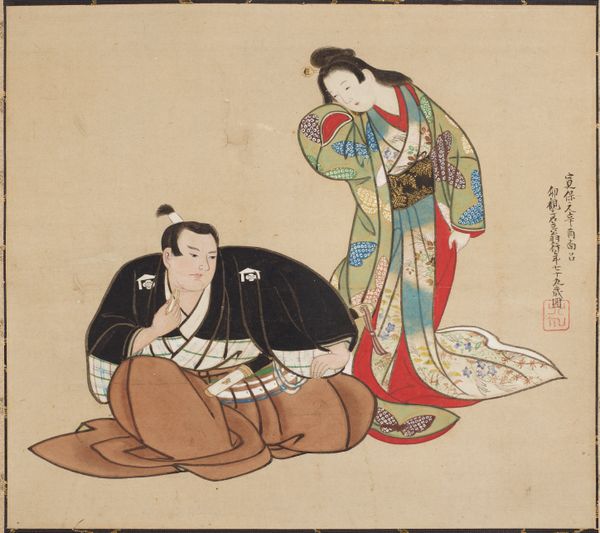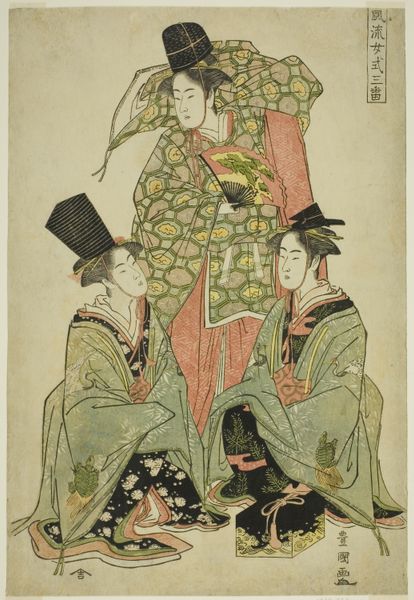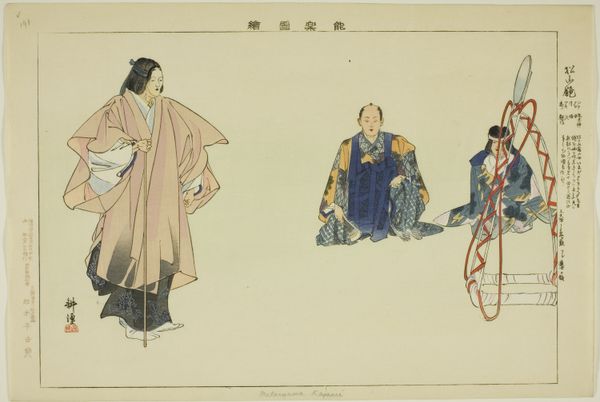
Hiun, from the series "Pictures of No Performances (Nogaku Zue)" 1898
0:00
0:00
Dimensions: Approx. 25.2 × 37.4 cm (10 × 14 4/3 in.)
Copyright: Public Domain
Curator: Let’s turn our attention to "Hiun, from the series 'Pictures of No Performances (Nogaku Zue)'" created in 1898 by Tsukioka Kogyo, currently housed here at The Art Institute of Chicago. It's a watercolor print, a lovely example of ukiyo-e. Editor: My first impression is one of quiet contemplation. The palette is restrained, but the details in the clothing are absolutely captivating. The positioning of the figures almost creates a sense of ritual or performance frozen in time. Curator: Precisely. This piece captures a moment from the Noh theater, a highly stylized form of Japanese drama that was extremely influential in Meiji-era culture. The artist is not just showing us the actors, but alluding to the broader cultural significance of Noh as a tool for nation-building. Editor: The hands are particularly striking, almost mirroring each other. Is there a significance to the hand gestures in Noh? They look very formalized. Curator: Indeed, Noh uses codified gestures to convey specific emotions or actions, and the way Tsukioka has depicted the hands, coupled with the positioning of their heads, emphasizes the narrative weight they carry. Also notice how their faces remain relatively stoic – it directs our focus to the movement and clothing. Editor: I can’t help but feel the symbolic importance of costume, especially regarding the elaborate cloud and wave motifs featured on the principal actor's garments. Could you tell me more about its design? Curator: Traditional Noh garments were often visually overloaded with details representing both wealth and meaning. Clouds traditionally represent the heavens and transcendence, and the waves imply a connection to the unpredictable forces of nature. They collectively imbue the actors on stage with powerful symbolism, especially to show cultural continuity between mythology and the current dynasty. Editor: So, what might have the original audience extracted from viewing it, something modern viewers might miss? Curator: Well, considering that Meiji Japan witnessed many challenges to its cultural identity via western influence, prints like this helped establish an orthodox national identity by representing high art. People looking at these works would participate in cultural preservation. Editor: Considering how this print encapsulates themes of preservation in such a stylized fashion, it gives us insight into how past generations negotiate collective cultural memory, and helps inform us of how to confront similar cultural debates today.
Comments
No comments
Be the first to comment and join the conversation on the ultimate creative platform.
